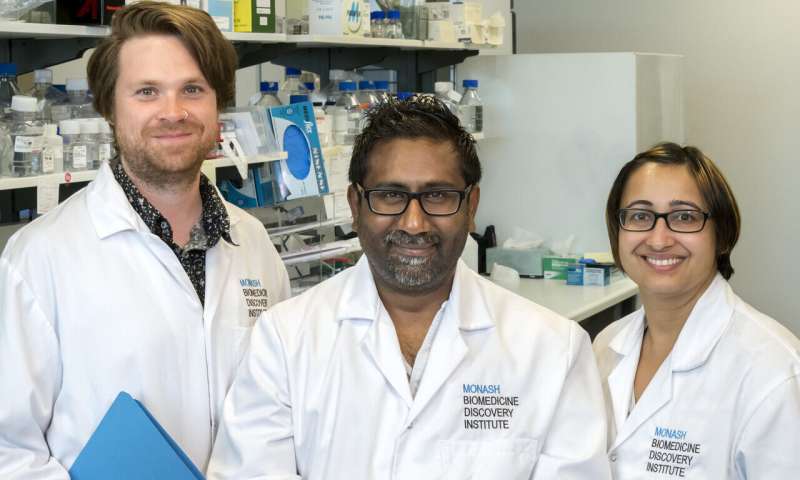Study reveals factors behind embryonic stem cell state

Embryonic stem cells (ESC) have the ability to self-renew, and, being pluripotent have the potential to create almost any cell type in the body. The embryonic stem cell state is established and maintained by multiple regulatory networks that include epigenetic regulators; the function of these epigenetic regulators though has not been well-defined.
An international collaboration led by Monash Biomedicine Discovery Institute (BDI) scientists has found for the first time that two new epigenetic regulators, TAF5L and TAF6L, maintain self-renewal of embryonic stem cells. The scientists also found that these proteins activate c-Myc (a well-known cancer gene), and its regulatory network.
Their findings were published in Molecular Cell today.
Monash BDI's Dr. Partha Pratim Das said TAF5L and TAF6L were discovered in a CRISPR-Cas9 loss-of-function genetic screen aimed at finding epigenetic regulators from among 323 epigenetic genes and at establishing how these controlled the embryonic stem cell state.
"It has been known that these factors existed, but for the first time we showed what they do and how they control gene expression," Dr. Das said. "Their function was not known before," he said.
"From our study we can show the exact mechanism and how these epigenetic regulators control gene expression."
"The two main things we found were that TAF5L and TAF6L transcriptionally activate the oncogene c-Myc, and also regulate OCT4 that is the master regulator of the embryonic stem cells."
"We found that the MYC regulatory network is predominantly controlled by them by which they maintain the self-renewal aspect of the embryonic stem cell state."
The findings would potentially make TAF5L and TAF6L very significant not only in the regenerative biology field but also in cancer research, he said.
Dr. Das said TAF5L and TAF6L also play a crucial role in induced pluripotent stem cells (iPSCs), a type of pluripotent stem cell that can be generated from adult somatic cells.
The scientists are further investigating whether TAF5L and TAF6L are linked to various types of cancer and whether they play an important role in neurodevelopment, testing this in mouse and human brain organoids.
Instrumental in the study were Professor Stuart Orkin (Howard Hughes Medical Institute) and Dr. Davide Seruggia (Dana Farber Cancer Institute and Boston Children's Hospital, Harvard Medical School), and the Monash BDI's Dr. Pratibha Tripathi, Dr. Martin Oti and Michael Bullen.
This research was supported by the National Health and Medical Research Council of Australia (NHMRC).
More information: TAF5L and TAF6L maintain self-renewal of embryonic stem cells via the MYC regulatory network, Molecular Cell (2019). DOI: 10.1016/j.molcel.2019.03.025




















